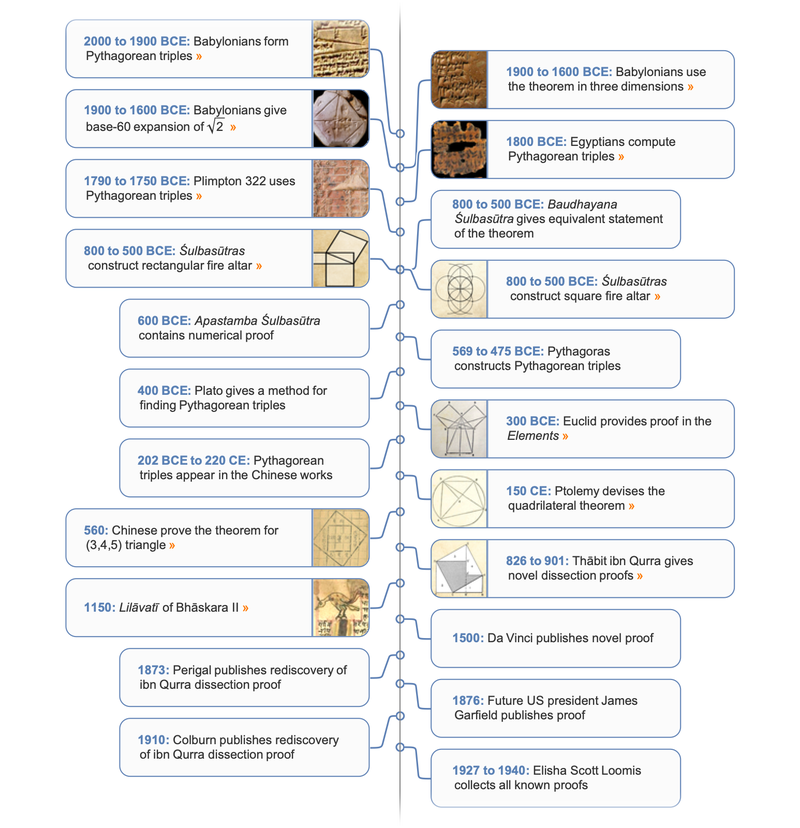Funding for this project generously provided by Overdeck Family Foundation
Pythagorean Theorem
The Pythagorean theorem is a fundamental result in Euclidean geometry that relates the side lengths of a right triangle through the simple relationship a² + b² = c². The relationship was known to the ancient scholars and builders of Babylon, Egypt, China and India. While Pythagoras lived and wrote from 569–475 BCE, the result that now bears his name appeared as early as 1800 BCE in surviving clay Babylonian tablets. The Pythagorean theorem was also known to early Chinese scholars and appeared in the sacred texts of ancient India related to altar building.
-

around 2000–1900 BCE
Babylonian Mud Wall Tablet
The mathematics of mud walls
-

around 2000–1650 BCE
Berlin Pythagorean Theorem Papyrus
Egyptian solution to a quadratic equation
-

around 1790–1750 BCE
Plimpton 322
Pythagorean triples: teacher's aid or trigonometry table?
-

around 1900–1600 BCE
Babylonian Inner Diagonal Tablet
The Pythagorean theorem in three dimensions
-

around 1900–1600 BCE
Babylonian Square Root of 2 Tablet
Computing the square root of 2 in base 60
-

around 800 to 500 BCE
Vedic Fire Altar Rectangle Diagonal
Altar construction using the Pythagorean theorem
-

around 800 to 500 BCE
Vedic Fire Altar Square Diagonal
Altar construction via a special case of the Pythagorean theorem
-

around 150 CE
Ptolemy's Quadrilateral Theorem
The Pythagorean theorem via cyclic quadrilaterals
-

around 560 CE
Zhoubi Suanjing Pythagorean Theorem Proof
One of the first recorded proofs of the Pythagorean theorem
-

around 850
Ibn Qurra's Pythagorean Theorem Proofs
Pythagorean theorem proofs by dissection
-

1150
Lilāvatī of Bhāskara II
Playful mathematics
-

1261
The Broken Bamboo Problem
Triangle geometry through broken bamboo
Timeline
